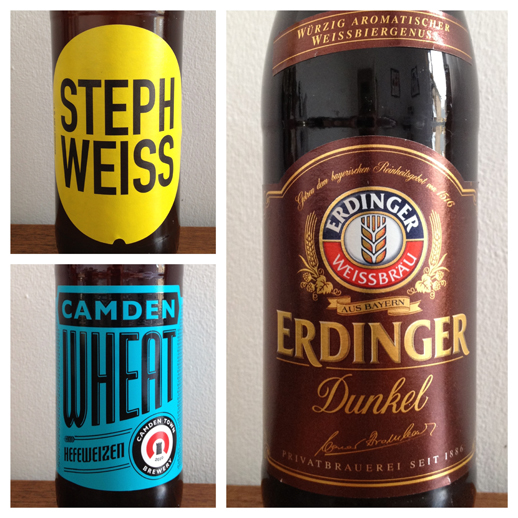by Roger Clapham
I’m a little bit obsessed with wheat beer, or Weiss bier as the good people of Bavaria would have it. It started almost ten years ago when myself and some friends would drink in a Stoke Newington boozer called The Shakespeare, a great pub and home to one of North London’s finest jukeboxes. Fairly unusually for the time, they served Erdinger, a classic German wheat beer, on draught. It would come in a great tall glass that looked like a vase, looking all cloudy and mysterious, possibly even a bit dirty (but in a good way of course), and given that you would probably have a few of them it would often give you the kind of hangover you felt you couldn’t possibly have deserved. But it was bloody delicious, and with youth on our side and no kids to wake any of us up at 5am the next morning, such a threat was not the apocalyptic idea it can sometimes appear to be these days.
Based on the brewing technique used (top fermentation) wheat beer of a sort can be traced back as far as 3500 BC and the Sumerians of Mesopotamia, in what is now Southern Iraq. However, it was Europeans, in particular the Bavarians – whose royal family were the exclusive brewers of the beer in the region throughout the 1600’s – that crafted it into what it is today. Traditionally it’s made using a wheat and barley mixed malt to create a light coloured beer, with specific yeasts used to get the flavours and aromas that typify it – namely cloves, banana, and bubble gum. It’s much more carbonated than certainly most British beers tend to be, and sweeter without a bitter hop flavour – there’s none of your extreme IPA hops here. Alongside the classic unfiltered bright yellow version, other varieties include “kristall” – a clear, filtered version and best avoided if you ask me – and a dark, more malty version known as “dunkel” (more of which later).
To be fair to the rest of Europe the Dutch and Belgians also produce some great wheat beers – or Wit Bier – but frankly it’s Bavaria or bust for me, Hoegaarden and its ilk can do one. Here’s some recent favourites.
First up is Steph Weiss, brewed in Germany on behalf of the South Africa craft beer group Brewers & Union. Despite the stark and modern graphic label, this is classic age-old Bavarian wheat beer – the genuine article in full weiss style, a mere 5%, and carrying the full banana and cloves aroma. It’s a hazy orange shade of yellow, thick and unctuous on the tongue, and done exactly as it should be, with that delicious spiciness making it a joy to drink.
Second, Camden Town Brewery’s wheat beer, or Hefeweizen. These chaps do some very good beer, and some of the smaller batch, more interesting brews they do like their unfiltered lagers are excellent. This is no exception, and despite being brewed far from the Bavarian motherland it has the authentic flavour you expect with wheat beer from the traditional German malts and hops used, but with a bit of an alternative twist – a bit Camden you might say. It’s bittersweet rather than sweet, unfiltered, smells like a bag of sweets and looks great – a hue at the crossing point between amber and brown, well suited to the autumn.
Finally, Erdinger Dunkel, which is actually a different style of beer from the others mentioned here if you wanted to be a pedantic beer bore, but it’s still a wheat beer and has that distinctive smell. There’s a delicious maltiness to this beer from the dark malt mix used, and a taste somewhere between a madman’s dream of brewing a porter with wheat and a hot-cross bun flavoured with ale. Smooth and thick from the higher carbonation wheat beers generally have, and a solid 5.3%, it’s a genuine Bavarian beauty and comes highly recommended.
And I’ve not mentioned lederhosen once. Damn.
